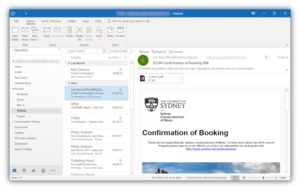So what does that mean for the information gatekeepers? Integration and access are the keys. We have more ways to access data than ever before. Whether we’re talking about social network integration or the BYOD trend that is becoming a staple policy for companies, flexibility is the name of the game. If a solution to a business situation can be found, it should be made available. If the amount of data being produced is anything to go by, the answer should already exist in most cases. So then it becomes an issue of access. Information officers need to find ways to integrate many different types of data as well as the sources of data. Employees are only as good as the information that they have. Limiting access limits their ability to be productive.
Security over everything
It was and is a major topic for all companies. The internet changed everything and to say that it disrupted some industries is a wild understatement. It changed the way society does business and interacts with each other. It changed everything. The difficulty for companies is how can you allow access to all the various data sources, without increasing your security risks? The answer is an obvious, you can’t. The trick is to find a balance between allowing your company to access the information that’s needed and securing access from outside parties. That will continue to be the main focus of companies for the foreseeable future.
Where do we go from here?
The trend of data volume will not be reversing. As information managers, you will be asked to manage the information available, but more importantly, the access to that information. Companies in the past 5 years have been opening up, often reluctantly, to new data access points. Employees have found ways to manipulate systems to get the information that they need and companies have often times been reactive in managing this type of access. An employee with a smartphone can collect and review a lot more data than was possible even 20 years ago. This is what drives business today. It will be up to the Information manager to control who sees what, instead of where that data is stored.



Leave a Reply